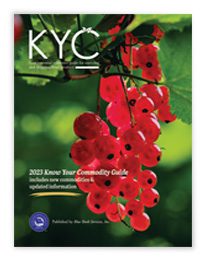Jicama Market Summary


Image: Nutink/Shutterstock.com
Jicama Market Overview
Jicama (Pachyrhizus erosus, meaning ‘thick root’ in Greek), is a legume and taproot, and a member of the Fabaceae or pea family (which includes beans, peanuts, and licorice). It is also commonly referred to as yam bean root, sweet turnip, Mexican potato, or Mexican turnip. Jicama has many names around the world, from kuzuimo in Japan and dolique tubéreux or pois patate in France to shankalu in India. It should not be confused with the similarly named African yam bean, a perennial bush bean plant in which both the seeds and roots can be consumed. Though its origin is not entirely clear, jicama has long been grown in Mexico, as well as countries in both Central and South America. It is also cultivated in the West Indies and was taken by Spaniards to the Philippines centuries ago, where it became a popular part of Asian diets, often as a substitute for bamboo shoots or water chestnuts. Like potatoes, jicama is a tuber with brown skin and white flesh. Unlike its root relative, jicama is a juicy, sweet, nutty-flavored treat and can be eaten raw (after removing the skin) or cooked. Similar in texture and flavor to a water chestnut, jicama will retain its crispness even after boiling. It is a popular addition to many dishes or as a crunchy apple-like raw snack. Some liken its flavor to watermelon. Although growers in parts of Hawaii, California, Arizona, Texas, Florida, and Puerto Rico have achieved success in some smaller scale jicama production, most commercial shipments to the United States or Canada come from Mexico. Though the late fall months are considered peak season, jicama is available all year via imports from Mexico and Central America.
Types & Varieties of Jicama
There are two principal varieties, jicama de agua (water) and jicama de leche (milk), so named to differentiate the internal juice. Most jicama cultivated for U.S. consumption is the water variety, with a large round root, similar in shape to a turnip. The other, less common milk variety has an elongated, knobby root with white juice.Pests & Diseases Affecting Jicama
Like other root vegetables, jicama is susceptible to bacterial spot and various fungal diseases, especially if soil is too moist. Few pests are interested in jicama plants due to the natural toxicity of its above-ground parts (vines, stems, flowers, and pods), which are infused with the toxin rotenone. Weevils and borers, however, have been known to attack developing roots.

